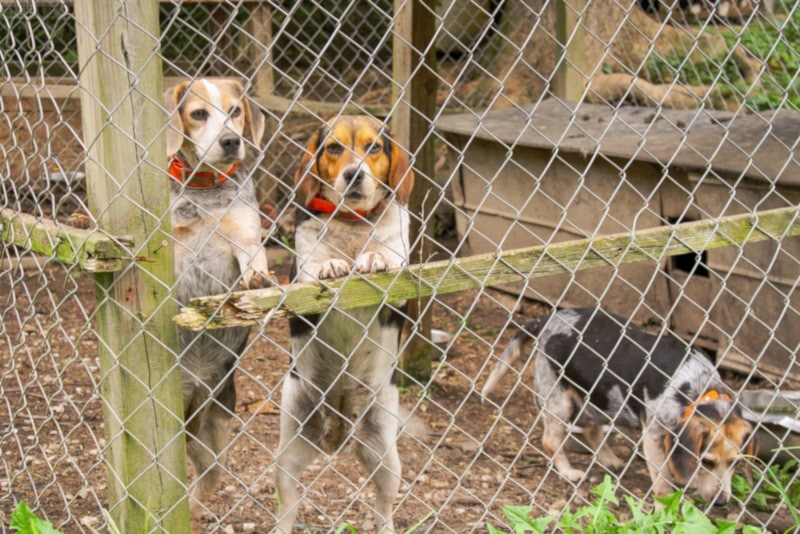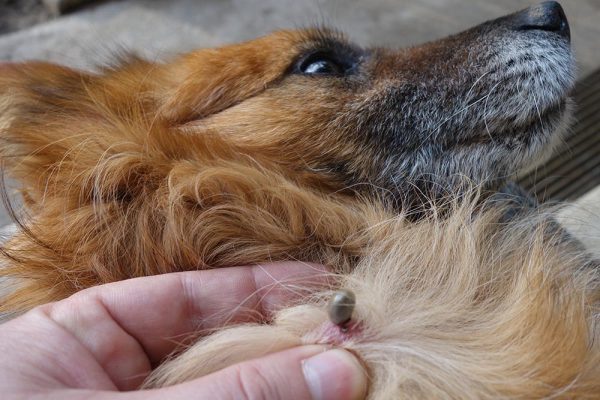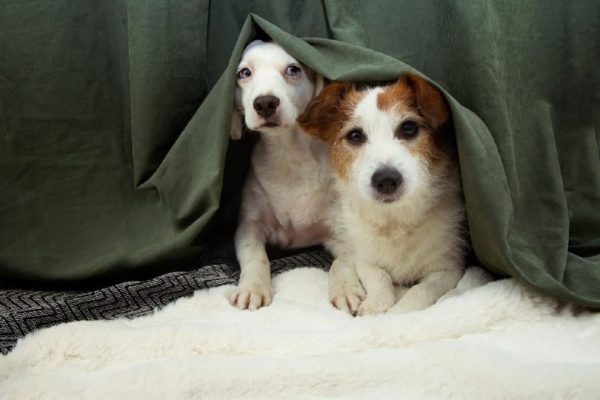In this article
View 6 More +Beagles are a popular and well-known breed of scent hounds that are often used for hunting small game, especially rabbits. They typically have a short coat that comes in a variety of colors, including tricolor (black, white, and tan), lemon and white, red and white, and other combinations.
The term “blue tick” generally refers to a coat pattern with black spots on a lighter background color, often appearing as dark blue or slate-blue spots on a white or tan base. These dogs typically have spotting around their legs and chest. It doesn’t cover their whole body.
Breed Overview
Height:
13–15 inches
Weight:
20–30 pounds
Lifespan:
12–15 years
Colors:
Any main coat color with blue tick markings
Suitable for:
Families of all sorts
Temperament:
Friendly and curious
Blue Tick Beagles are very popular. Therefore, you may have to pay a bit extra for these canines. However, their coloration is often very subtle—don’t expect most blue tick Beagles to have dramatic markings.
Blue Tick Beagle Characteristics

Earliest Records of Blue Tick Beagles in History
The Beagle breed itself has a long and storied history, but the term “Blue Tick Beagle” is a more modern term. In the past, all Beagles were likely lumped together, with blue tick marking being somewhat common. Today, this marking is quite popular.
The Beagle breed has been around for centuries, with ancestors dating back to ancient Greece. However, the modern Beagle, as we know it today, was developed in England in the 19th century. Beagles were initially bred for hunting hares and rabbits, and their excellent sense of smell and compact size made them well-suited for this purpose. They’re still used today for this reason.
The Romans were known for their love of hunting, and they likely brought similar hound-type dogs to Britain during their conquests around 55 BC. These hounds were then crossbred with local British hounds, giving rise to the foundation stock of the Beagle breed. However, the breed took centuries to develop on the British Isles and wasn’t what we know today as the Beagle until the 19th century.

How the Blue Tick Beagle Gained Popularity
The Blue Tick Beagle was always somewhat popular. Beagles developed naturally as hunting dogs over centuries and centuries. However, they were likely always popular hunting dogs, though we don’t know exactly what markings they had.
In the mid-18th century, Reverend Phillip Honeywood of Essex, England, played a significant role in developing the Beagle breed. He was a passionate hound enthusiast and was instrumental in establishing a pack of hounds with distinctive characteristics, such as their small size and keen sense of smell.
He is one reason that the Beagle became more set in stone and developed into the dog we know today. He also popularized the Beagle over other hunting breeds, which were also popular at the time.
Beagles were brought to the United States in the 19th century, where they gained popularity for their hunting abilities and friendly temperament. They’re very well suited to hunting rabbits and have become a favorite among American hunters. However, they also make great family dogs.
Formal Recognition of the Blue Tick Beagle
Beagles with this coloration have been recognized as long as the breed has—which is a pretty long time. The Kennel Club in England officially recognized the Beagle as a breed in 1873. It was one of the first breeds recognized by the kennel club, largely because it is so old and has remained steadily popular.
Other kennel clubs also followed suit as the Beagle became popular in other areas. The American Kennel Club recognized the Beagle in 1885, for instance, which is around the time the breed developed a foothold within the United States.
Other kennel clubs, like the Canadian Kennel Club, also recognize the Beagle.

Top 5 Unique Facts About the Blue Tick Beagle
1. They aren’t that rare
Blue Tick Beagles may be less common than your usual tri-color Beagle. However, they aren’t particularly rare and can be found anywhere else you can find a Beagle. Still, some breeders do sell them for more, as they are often more sought after than other dogs.
2. Beagles are an extremely old breed
Beagles are an ancient breed that’s descended from both Greek and English hunting dogs. They were used as hunting dogs throughout their history and probably came with all sorts of markings for as long as they’ve been around.
3. Beagles don’t bark much
Beagles are known for their hunting howl, which is called baying. This distinct vocalization is the main way they communicate. Therefore, they don’t “bark” as much as your average dog does.

4. Beagles have a very good sense of smell
Beagles have a significant sense of smell, which is one reason they’ve remained so popular throughout their history. This sense of smell allows them to hunt rabbits and other small game with ease. However, it also increases their likelihood of wandering off.
5. Blue Tick Beagles aren’t all that different from other Beagles
While they do look a little different, these dogs are not all that different from your usual Beagle. They have the same temperament and other characteristics.

Do Blue Tick Beagles Make a Good Pet?
Blue Tick Beagles can make great pets for the right family. These dogs are very friendly, and sociable, even with children. While they do need some socialization, they aren’t aggressive in the least. In fact, some may describe them as a little too friendly.
They also don’t have tons of energy. They can live in just about any environment, including apartments, as long as they receive enough exercise. However, a secure yard can be helpful. You cannot let them off leash, as they have a tendency to wander and follow their nose.
Beagles don’t have high grooming needs, either. They may need regular brushing to help keep their shedding in control, though, as they often shed quite a bit. Beagles are vocal dogs and may howl or bark when excited or communicating. This is a natural trait, but it is essential to consider your living situation and neighbors if excessive barking could be an issue.
Like all dogs, owning a Blue Tick Beagle is a commitment. However, they tend to make very good family dogs for those with kids.

Conclusion
Blue Tick Beagles are extremely similar to your average Beagle, except they have blue spots along their legs and chest. Otherwise, their temperament and traits are identical.
If you’re interested in adopting a Beagle, I would highly recommend choosing a Beagle from a working line. I have bred Beagles in the past, and working line Beagles tend to have a calmer temperament and better health. Show-line Beagles are bred mostly for looks, which can cause health to fall by the wayside.
You can find plenty of Blue Tick Beagles from working lines, as well. This marking is common across most Beagle populations.
Related Reads:
- Lemon Beagle: Facts, Origin & History (With Pictures)
- How Long Do Toy Poodles Live? Average Lifespan, Data & Care
Featured Image Credit: RA – Photography, Shutterstock



















